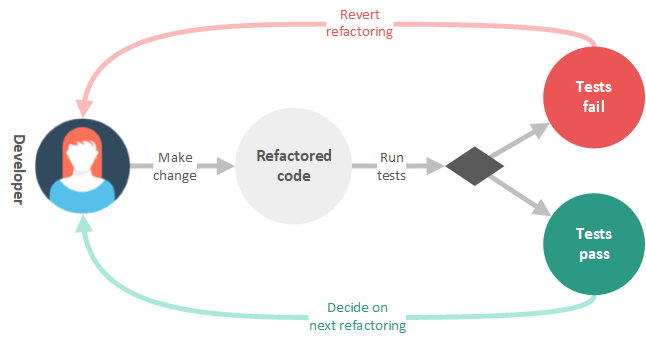Up until 2015, social media dominated the electronic world, creating a new method of sharing content, managing customer support, or communicating around the world. We all got used to it and so were expecting instant gratification and simplicity from everything electronic. In 2015, messaging apps such as Messenger, Whatsapp, Kik, and Telegram took over social websites concerning users.
This generated a new shift in how we get advice on the internet: dialog became the new method of sharing -- the newest interface. That, of course, had a powerful effect on the service business, which consequently faced a drastic increase in online interactions. Thus, companies today are having to find ways to effectively manage the higher requests while still providing outstanding customer care.
The industry numbers speak for themselves: 60 percent of respondents believe that one minute is too long to be on hold, 42 percent whine about the necessity to talk to various brokers, and 78 percent finishing contracts due to terrible support. This amounts to $1.6tr annual losses due to poor customer support in the US alone. Clearly, something needs to change.

What Is the Future of Customer Care?
Hire more agents? While that would be the default option, many major companies now have thousands of service agents and have attained a plateau in productivity. Implementing new people does not really improve the stats.
Compose more FAQs and support content? While that could be a remedy, all support departments know that most individuals don't bother to go and look for a response but want to be told right and in real time. Additionally, every customer thinks they have a special problem and needs personalized support.
It is not more agents, it is not new content, certainly the optimal solution is automation.
But how do we automate sections of customer service to offer interactive and instant answers on different channels? Conversational technology is the answer during the integration of agents powered by artificial intelligence.
"Chatbots are making their way into the landscape of customer relations with the opportunity and promise to offer you a better client experience.The hype is as powerful as the advantages this new communication channel can bring: a very simple interface, an enriched customer connection with customized recommendations, a 24/7 accessibility, etc.. ."
Olivier Laborde - Innovation & Digital Transformation Leader
Now, it's only natural to feel apprehensive when thinking about AI.
After all,"72% of Americans are very or somewhat concerned about a future where robots and computers are capable of performing many human tasks -- more than double the 33 percent of people who have been enthusiastic about the prospect" (origin ). However, when talking about customer support automation, we are not referring to humanoid robots telling you to turn your system off and on again. We're speaking about chatbots. Chatbots are computer applications capable of understanding human language and also to answer accordingly. They are not physical beings: they are an interface you can chat with in your telephone or laptop.
"For me, chatbots are full of promises, even if they have a way to go."
Jérôme Colombain, Tech journalist at France Info
How AI Chatbots Can Improve Customer Satisfaction

These days, the objective of chatbots is not to understand everything, rather handle a selected number of topics, such as bill management, order tracking, account management. These are simple and repetitive tasks that don't require the added-value that people bring. By prequalifying requests, handling simple questions and routing customers to the right services, bots also make the lives of support representatives much easier.
"A chatbot can effectively respond to simple customer questions or manage appointments. However, chatbots will not replace programs (unless perhaps the most basic ones) or human client connections. Their strength lies in their ability to respond instantly to simple requests and to qualify needs before redirection."
Camille Jourdain, Blogger and author
A fantastic example is our cooperation with a significant French service firm. When we met together, they explained their battle with the rising number of requirements overwhelming an already overstretched customer service service. We sat down together and identified the most frequent conversations with their customers and determined which could be automated. Usually, we focus on automating conversations which can be qualified as simple: trades of 3-4 messages where a response is readily provided.
The solution set up was to automate these with a chatbot to provide 24/7 availability while reducing the service workload, after that which we call the receptionist pattern. The secretary pattern is as soon as the bot is designed to comprehend each user input and is capable of either handling them autonomously or redirect them to the correct agent. In some complex cases, we combine both: the bot handles the very first portion of the conversation, usually gathering customer information, and then hands over to an individual agent. For AI chatbot testing services you can search online and get latest updates.
These days, the bot is able to accelerate the handling of queries regarding invoice management up to 2 or 3 occasions. It works together with individual representatives on other queries by collecting client data, such as the contract number, the right telephone line involved, which particular invoice or what portion of this invoice, before moving the dialogue into the broker. It's also capable of transferring any customer to the correct service on the initial effort, preventing endless redirections.
"Chatbots are key tools of good integrated customer experiences. They shouldn't be created within an information island however, whenever possible, integrated with the organization's customer relationship management systems.

The simpler this integration is, the greater it'll be to make state of the art chatbots. Additionally, there must be a human oversight system in place, whether the chatbot is enabling human operators or the other way round.
The majority of the time, artificial intelligence is powered with human originated content and data. This is particularly true with chatbots."
Olivier Ezratty, Tech writer and author
The chatbot enabled our client to drastically improve customer support satisfaction by lowering conversation duration by half and reducing the rate of numerous transfers, showing an immediate effect on their churn rate. The bot also allowed for an increase in the support centres' productivity: after all, the bot successfully resolves 20% of all conversations.
Together with the time gained, agents also refocused on jobs with a higher added value like personalized or sales support, therefore generating new revenue, something all brands must search.
This is only an illustration of exactly what AI can bring about corporations today. Based on Adobe's latestDigital Trends report,"15 percent of organizations are currently using AI. And 31 percent said it is on the agenda for the next 12 months" Will you be one of these?



